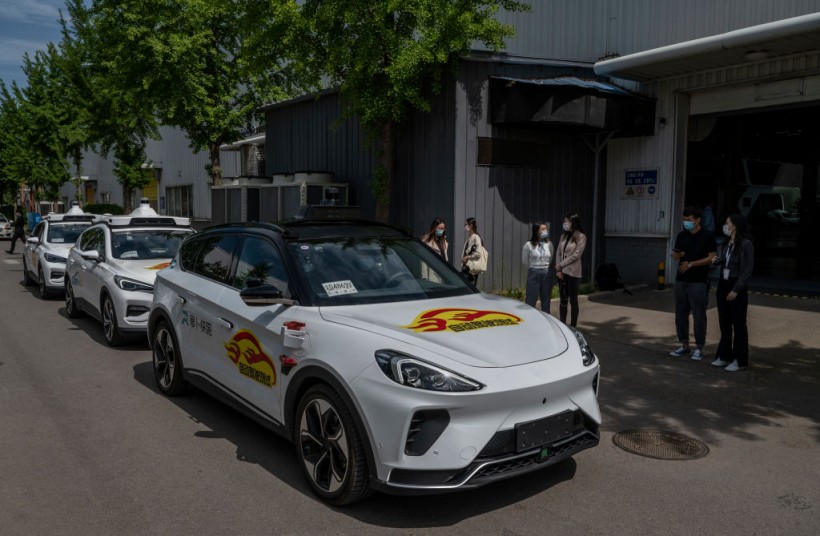Chinese technology company, Baidu, has announced that its driverless taxi services can now operate without human drivers in a part of Beijing.
The development may reduce the cost of operating self-driving taxis up to the permitted number of cars, according to a report by CNBC on Friday, March 17.

BEIJING, CHINA - APRIL 22: Apollo robotaxis that are part of Baidu's Apollo Go autonomous ride-hailing service are seen during a media tour at the Apollo Park on April 22, 2022 in Beijing, China.
Baidu's Autonomous Vehicle Operation
The Beijing suburb of Yizhuang, home to several corporations such as JD.com, has been initially permitted for Baidu's autonomous vehicle operation, which includes ten driverless taxis.
This region is the primary site for Baidu's robotaxi public road testing and operation in Beijing.
The Chinese government has first given Baidu permission to drive 10 autonomous vehicles in Yizhuang, a suburb of Beijing that is home to many businesses, including JD.com.
This area is where Baidu's robotaxi public road testing and operation in Beijing mostly occurs, according to CNBC.
Local governments granted Baidu and Pony.ai permission to charge for their autonomous taxi services in November 2021, and customers of public transportation may now book discounted robotaxi rides using their apps.
In major Chinese cities since Q3 2022, Baidu's self-driving taxis have completed an average of over 15 rides per car every day, which is comparable to conventional ride-hailing services.
In August 2022, Baidu announced that it has been granted authorization to operate a small number of staff- and driverless robotaxis on the outskirts of critical Chinese cities including Wuhan and Chongqing.
With no human drivers aboard, Alphabet's Waymo and General Motors' Cruise unit have begun offering public driverless taxi services in the United States.
Read Also: Baidu's New Robotaxi With Detachable Steering Wheel Will be 48% Cheaper than the Previous Model
Significant Success
In an earnings conference on November 2022, CEO Robin Li reported significant success in the field of self-driving taxis. According to a transcript of the conference, the company's autonomous taxis completed an average of over 15 trips per day in several major Chinese cities during the third quarter.
The company, which received regulatory permission to charge fares for robotaxi rides in a suburban area of Beijing, has been conducting public road testing of its self-driving taxis in the area.
The company's robotaxis are equipped with safety features including a safety operation network, redundant monitoring, and remote driving.
Previously, the company required a human employee to be present during robotaxi trips. However, after receiving regulatory approval in certain areas, the vehicles may soon operate without safety drivers.
Wuhan and Chongqing had granted licenses allowing commercial robotaxis to operate without human safety drivers. However, there are still limits to these permissions. In Wuhan, for example, robotaxis can only operate in a 13-square-kilometer service area.
While regulatory permission is still limited, the successful implementation of autonomous taxis without safety drivers could have significant implications for the transportation industry of China.
Related Article: China's Huawei, Baidu, Xiaomi Invests $19b on Electric Vehicle Ventures, Self-Driving Technology










